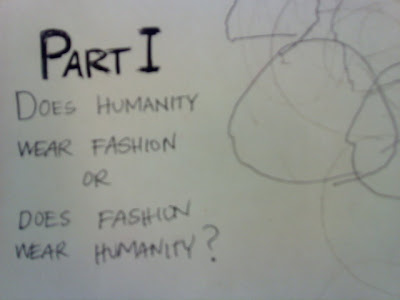When she walks into the building everyone gazes.
When I stand out in the hallway waiting for 'Intro to Archaeology' to start, I try not to stare but my brief glances soak up her visual archaeology.
Meet Agni: She's quite the spectacle on campus.
Like her counterparts at SF State she's here to pursue a bachelors degree. Dissimilar to 99.8% of the campus community, she's an Indian-American woman who unapologectically sports LOLITA.
(Lolita, according to Wikepedia, is a fashion subculture originating in Japan that is based on Victorian clothing as well as costume from the Rococo period.)
Via cultural appropriation, Agni's material adornments are especially louder than most. She stirs the visual senses in audacious ways. And from my perspective, Agni, like you and I, sports her own human costume. A type of human costume she chooses freely.












